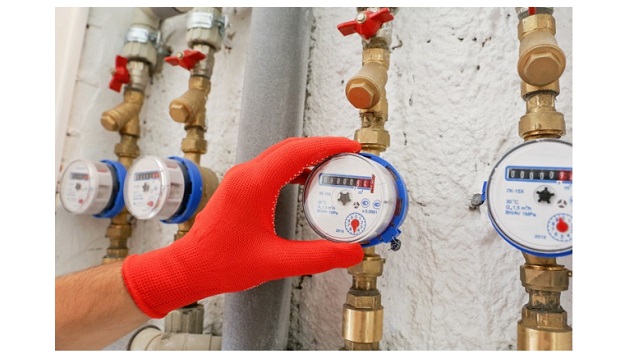The statistics are alarming: In the United States alone, household leaks waste about 900 billion gallons of water each year. To put that number in perspective, that’s enough water to supply about 11 million homes annually. And other countries – from Europe to Asia – face similar challenges. Compounding this problem are anticipated water shortages.
But help is here. Ultrasonic technology gives water meters installed in smart buildings and smart cities the ability to detect and localize leaks as small as one drop every few seconds. Cities from Austin to Antwerp are installing high-tech smart water meters that give customers the information they need to find leaks and conserve water while helping utilities identify infrastructure leaks in aging pipes and broken water mains.
“The water we have today is the only water we will ever have,” says Holly Holt-Torres, water conservation manager for the City of Dallas Water Utilities. “We have to conserve it. Technology will allow us to do that at an increasingly higher level.”
But this ultrasonic technology has applications that extend beyond water meters. The same technology can be used in meters that measure natural gas flow and even detect the mixture of gas flowing through pipes. It can even help medical professionals regulate oxygen delivery in surgical equipment.
Going with the flow
Ultrasonic waves, of course, are not new. Bats, for example, use ultrasonic ranging to avoid obstacles and catch insects at night. And in more high-tech applications, it is used in material discernment, collision avoidance in automobiles, and industrial and medical imaging.
Now it’s being used in water meters and other flow meters. Meters traditionally have relied on an electromechanical system with a turning spindle or gear that uses a magnetic element to generate pulses. But – as is the case with thermostats, motors and lots of other everyday devices – electromechanical systems in flow meters are rapidly transitioning to electronic systems.
“The water we have today is the only water we will ever have. We have to conserve it. Technology will allow us to do that at an increasingly higher level,” said Holly Holt-Torres, water conservation manager, City of Dallas Water Utilities.
In these systems, a pair of immersive ultrasonic transducers measures the velocity of acoustic waves in the fluid. The velocity of acoustic wave propagation is a function of the viscosity, flow rate and direction of the fluid flowing through the pipe. Ultrasonic waves travel at different speeds depending on the stiffness of the media they’re traveling through.
The accuracy of the measurement depends on the quality of the transducer, precision analog circuitry and signal processing algorithms. Acoustic or ultrasonic transducers are piezo materials that convert electric signals to mechanical vibrations at a relatively high frequency of hundreds of kilohertz. Typically, a pair of ultrasonic transducers in the range of 1-2 MHz must be well-matched and calibrated in order to measure flow accurately. They make up a significant part of the flow meter’s cost. The sensor system must operate at very low power to ensure a 15-20 year battery life.
Our company’s advanced flow metering chip, the MSP430FR6043, includes a unique analog front end and algorithm, which significantly improves accuracy while reducing overall cost and power consumption. Our flow metering architecture leverages high-performance analog design, advanced algorithms and embedded processing to mitigate the need for an expensive pair of ultrasonic transducers. Analog front end and signal processing algorithms compensate for transducer mismatch.
Making every drop count
A typical ultrasonic flow meter transmits an ultrasonic wave and measures the differential delay at the receiver to estimate the rate of the flow. Delay measurements are usually handled by a time-to-digital-converter circuit that monitors the zero crossing of the received waveform. The challenge with the typical approach is that it is not sensitive enough to detect flow levels with high accuracy.
Our architecture deploys a smart analog front end featuring a high-performance analog-to-digital converter to improve signal-to-noise quality and overcome calibration inaccuracies. This approach has several benefits:
- It can achieve higher accuracy by reducing interference and improving signal-to-noise ratio.
- The architecture can measure a wide dynamic range of flow, from a fire hose to a small leak.
- By using a lower voltage driver, it significantly saves on power and cost. The average current for one measurement per second is less than 3 microamps. This translates to a battery life of more than 15 years.
- It can detect turbulence, bubbles and other flow anomalies, which is important for flow analysis and servicing the pipelines.
- The technology is robust to amplitude variations in the two directions of the flow, which may occur in water and gas at higher flow rates.
Many other TI technologies are critical for a high-performance flow meter. A low-power microcontroller with integrated ultrasonic analog front end, a high-performance clock reference, a low-quiescent current power management and ultra-accurate impedance matching of transmit driver and receive amplifier paths are examples of additional differentiating technologies in these flow meters.
Click here for more information

